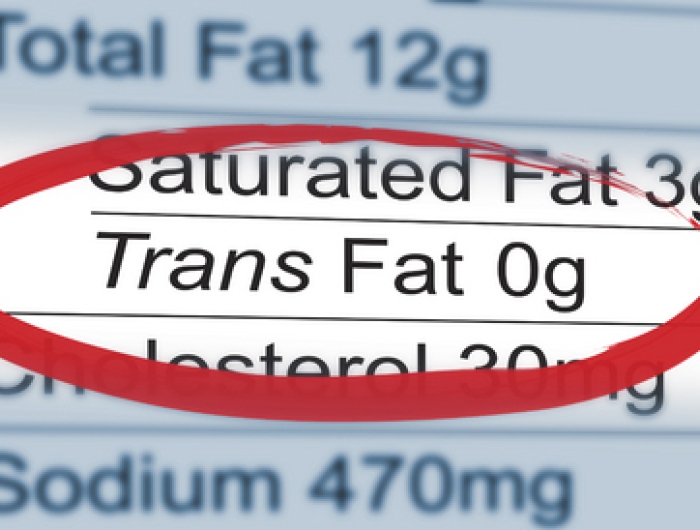Dangerous 'trans fat' present in foods, absent on labels

"Secret fat" may be less secret soon -- but consumers may still be confused if FDA has its way
You probably have no idea how much trans fat might be lurking in your cupboard, says the nonprofit Center for Science in the Public Interest (CSPI). That's because food labels don't have to list trans fat in the same way they list saturated fat—even though both fats promote heart disease. Without trans on the label, it's pretty hard to keep your daily intake of trans fat as low as possible, which is what the National Academy of Sciences recommended this month. And the Food and Drug Administration (FDA) estimates that every year thousands of Americans die prematurely for lack of trans- fat labeling.
So CSPI—the group best known for its analyses of restaurant foods (and for lobbying successfully for the Nutrition Facts labeling law)—shipped a dozen popular packaged foods to an independent laboratory for analysis. The results, published in the July/August issue of the group’s Nutrition Action Healthletter, show that the current labeling regulations enable some foods to look much better than they really are. For instance:
- Pepperidge Farm Flaky Crust Chicken Pot Pie has 8 grams of saturated fat per serving (one-half of the 16-ounce pie). But its 6.5 grams of trans fat per serving goes completely undisclosed. Competitor Marie Callender’s serves up 10 grams of sat and 8 grams of hidden trans—for a total of 18 grams of artery-clogging fat per serving. (That’s about a whole day’s worth of that kind of fat, since the Daily Value for saturated fat is 20 grams. Eating the whole pie doubles the damage.)
- Entenmann's Crumb Coffee Cake lists 2.5 grams of saturated fat per serving on its Nutrition Facts label. But consumers have no way of knowing that each serving packs another 2.5 grams of trans fat. So the label makes that product look only half as bad as its (trans-free) sibling, Entenmann's All Butter French Crumb Cake, which lists 5 grams of saturated fat in a similar serving. Both are equally bad for your heart.
- You might think that Jolly Time Butter-Licious popcorn, with 1.5 grams of saturated fat per serving, is better than Newman's Own Pop's Corn with Natural Butter Flavor, which lists 4.5 grams of sat fat in a similar serving. Think again. Jolly Time's 3 grams of hidden trans fat evens the scales. Newman's popcorn has too much fat for what should be a low-fat snack, but at least his label is honest, says CSPI.
- Gorton's Crunchy Golden Fish Sticks lists 4 grams of saturated fat per serving—that alone might make careful label-readers wary. But it's the label that's fishy, says CSPI, for keeping 3 additional grams of trans fat hidden from consumers. A total of 7 grams of heart-unhealthy fat in a fish entree? It's enough to make your arteries crunchy and golden.
CSPI first asked the FDA to require trans fat labeling in 1993, but the agency has been slow to act. When drafting a proposed rule in 1999, the FDA estimated that simply disclosing trans fat on food labels would save between 2,100 and 5,600 lives each year. It now appears, though, that FDA will roll out a final regulation that would merely list trans fat grams without the same kind of Daily Value that other nutrients on the label have. Consumers would have no context for the number of grams.
"It's good news that the FDA is poised to require trans fat on food labels, after doing nothing for nearly a decade," said CSPI nutrition policy director Margo Wootan. "But labels that don't list a Daily Value for trans fat would be misleading because they would give no indication of whether a given number of grams is a lot or a little."
The best solution, says CSPI, happens to be the simplest: Require labels to list trans-fat content alongside saturated fat—using the existing Daily Value (20 grams) for saturated fat. That way, the label would help consumers avoid the two fats that promote heart disease. (Canada is planning to do exactly that.)
Most dietary trans fat comes from vegetable oils that are partially hydrogenated—a process that makes oils more shelf-stable and solid at room temperature. A small amount of trans fat occurs naturally in meat and dairy products.
Note: For the full Nutrition Action Healthletter article, “Trans Fat Still Under Cover,” or to interview author Bonnie Liebman or CSPI nutrition policy director Dr. Margo G. Wootan, contact Jeff Cronin at 202-777-8370.

